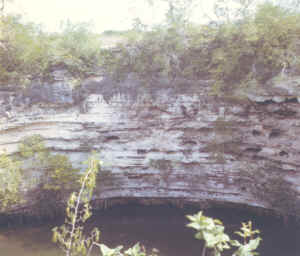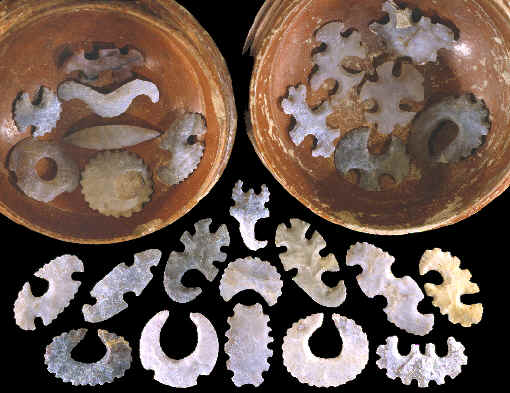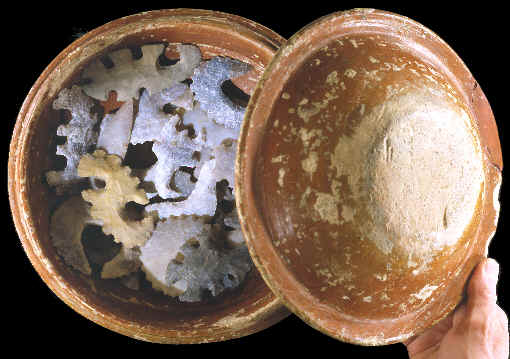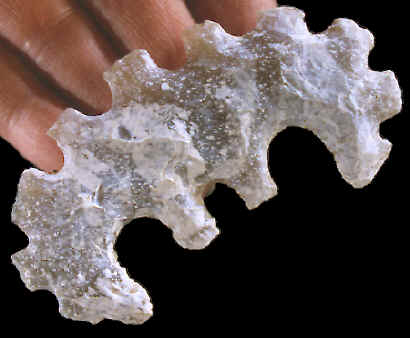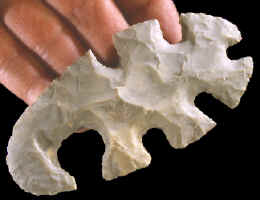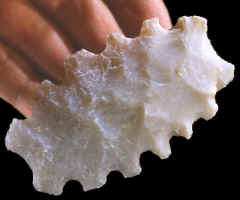|
|
|
Chert was one of the most important natural resources available to the Maya people. Most of it was used to make stone tools, such as adzes, axes, knives, scrapers, thrusting spears, atlatl thrown dart points and core blades. The other use for chert was for the manufacture of ceremonial items, mainly in the form of eccentrics but also items such as finely crafted knife blades. |
|
|
One of the largest and most intensive stone tool manufacturing sites in Maya society was located at Colha in northern Belize. The location was particularly ideal because of its natural geological chert bearing soils that in fact contained an endless amount of that material. Also, there was plenty of fresh water. The first concentrated waste mounds composed of manufacturing flakes and broken artifacts appear there around 100 B.C. during the Late Preclassic Period. This is the first indication of the shift of lithic production from an individualized cottage level industry to one of a community of specialized craftsmen. |
|
|
At Colha, the raw chert was collected in two ways. One way was by picking up nodules on the surface or limited quarrying of surface boulders and the other was mining un-weathered nodular chert in the ground. The mining of chert at Colha was on a level that has been compared to some of the well known Stone Age flint mines in Europe such as Grimes Graves, Grand Pressigny, Spiennes and Rijckholt. |
|
|
More than 100 stone tool workshops have been recorded at Colha in northern Belize. The size of some of these mounds of lithic debris measure almost 100 feet (30 m) across and 5 feet 1.5 m) deep. |
|
|
Stone artifacts manufactured at Colha were traded to many other Maya sites in northern Belize. Macro-blade daggers made at Colha have been found at Tikal and El Mirador in Guatemala. |
|
| CONTINUE ON TO PAGE THREE | |
|
"REFERENCES"
1946,
"The Ancient Maya," by Sylvanus G. Morley, page 436. |
|
